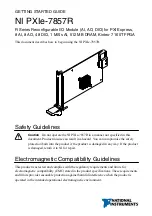
MT-10TDC-HV-C: #35094
Rev 17.2/12-21
8
3)
3A
3B
3C
Connect the electrical connectors on the vacuum package (fig. 3A-C).
4)
4A
Attach the vacuum
package securely to the
forklift or other hoisting
equipment in a protected
location where the
vacuum package will
move with the lifter and
will
not
interfere with
hoisting equipment (see
arrows in fig. 4A for two
potential mounting
locations).
1
Caution:
The low vacuum
warning light must
remain visible at all times
(see
1..... Consult the hoisting equipment manufacturer to determine how to mount the vacuum package in a safe location that will not interfere with
hoisting equipment operation.
ASSEMBLY











































